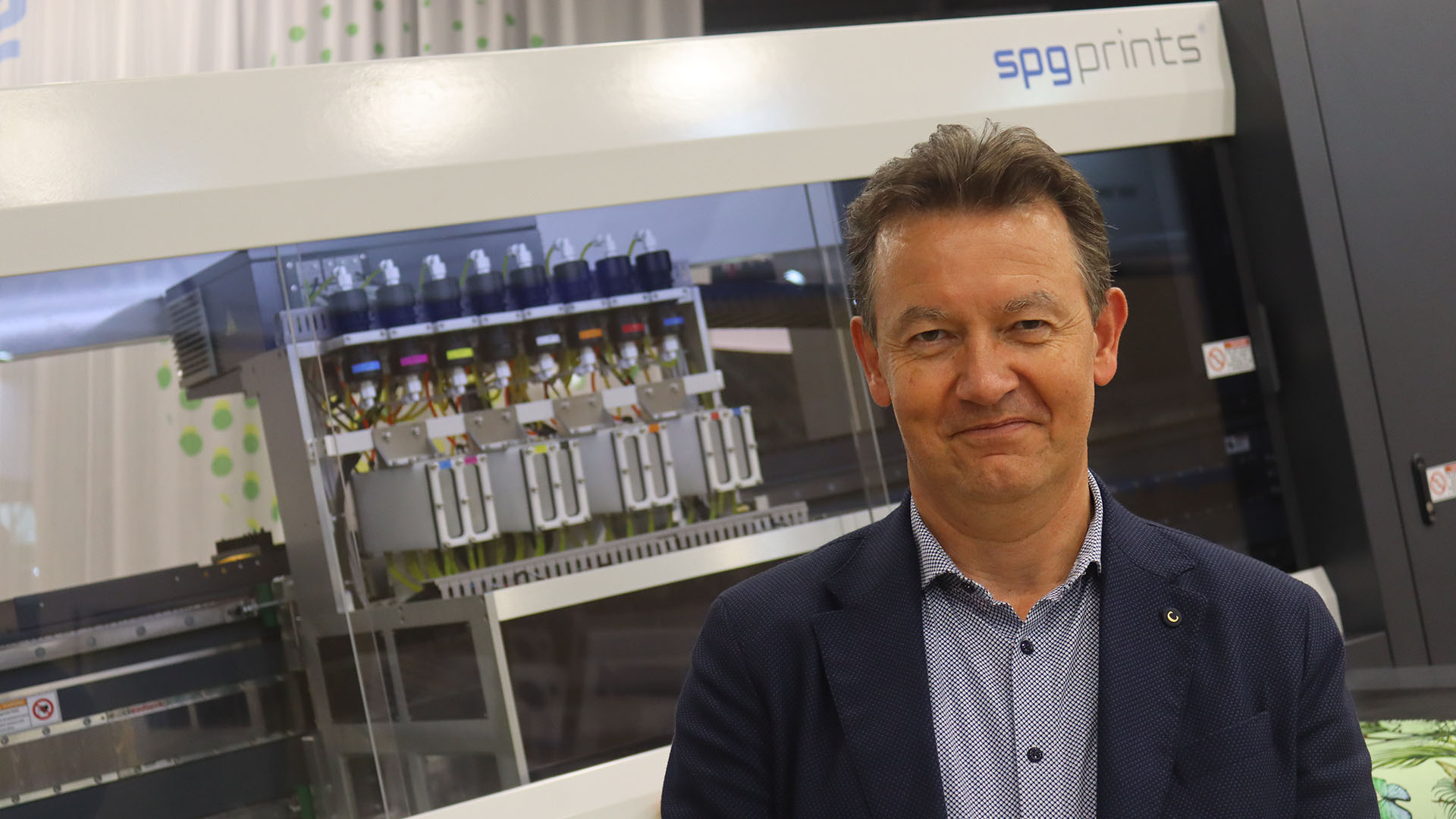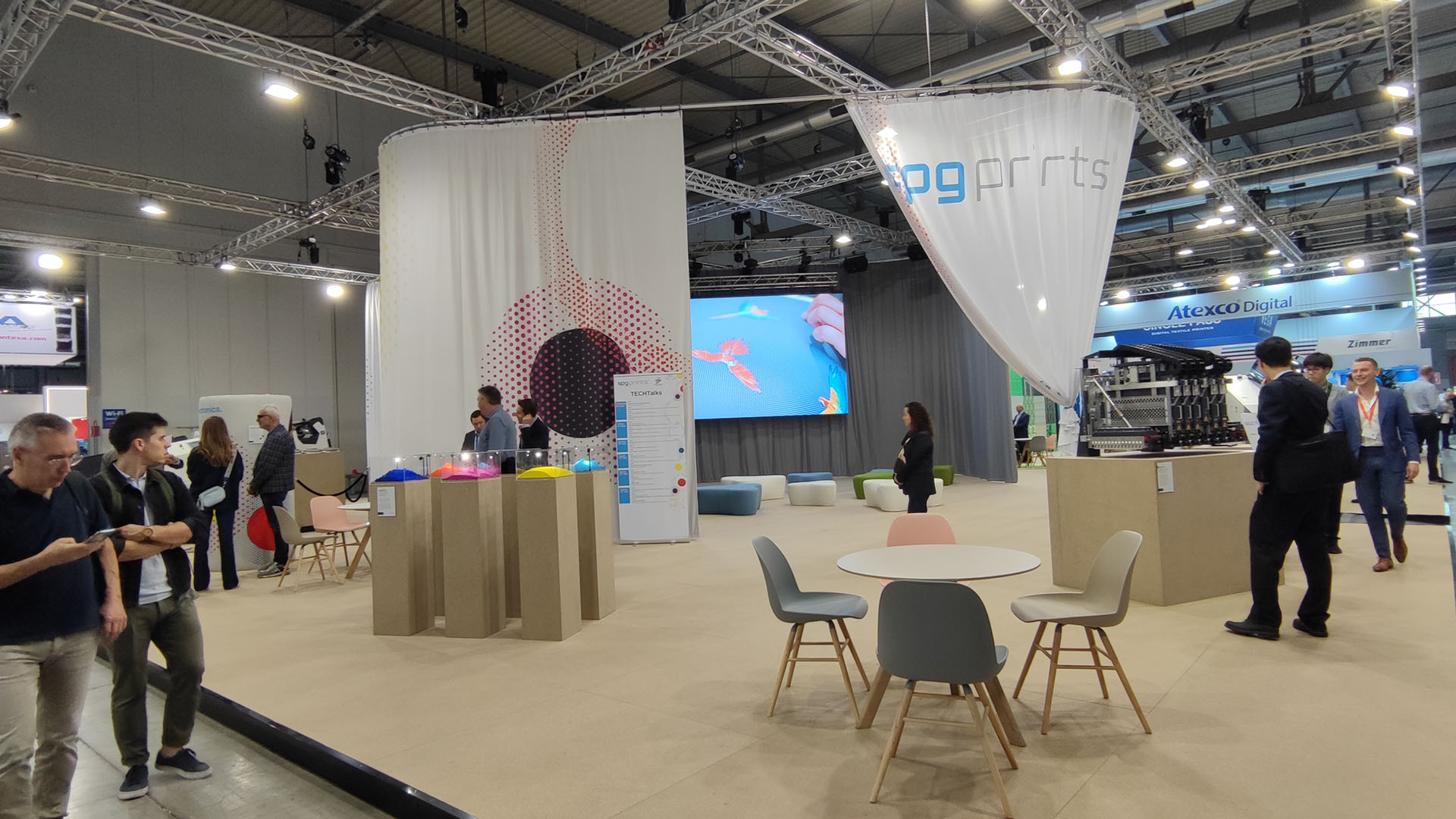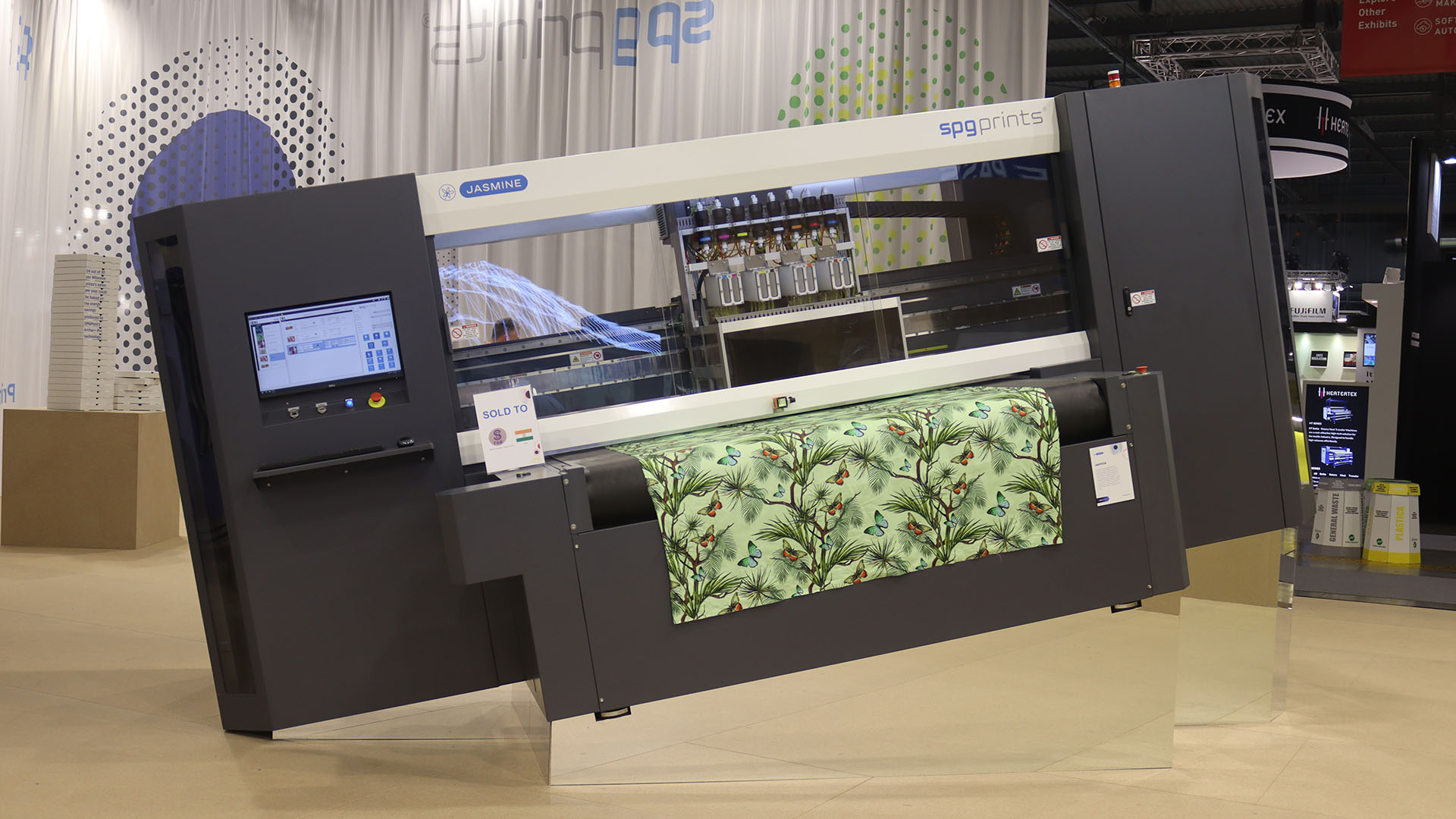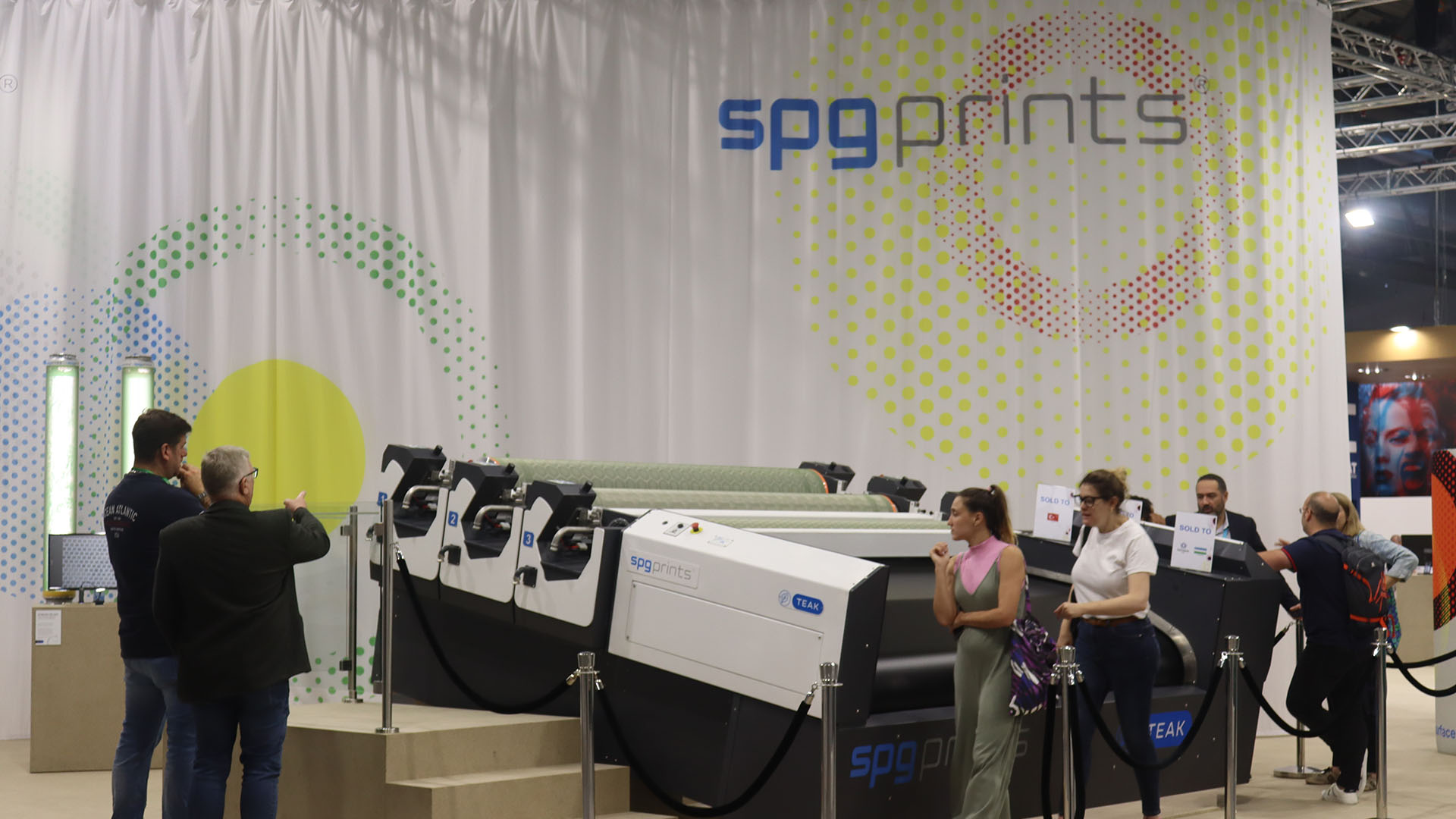SPGPrints, one of the leading manufacturers specializing in both digital textile printing and screen printing, has shown its power towards a more sustainable textile industry with its new technologies and an attractive booth concept. The latest innovative and sustainable printing solutions presented with the leaning mirror stands which make them feel like they stay in the air, attracted great attention from visitors. The company also showed its difference with its comprehensive sustainability approach by not running its machines during the exhibition to prevent textile waste and unnecessary energy consumption. Answering Textilegence’s questions, SPGPrints Chief Commercial Officer Ruud Zantman shared their latest solutions regarding rotary and digital printing, and the impressions about ITMA 2023.
Stating that ITMA 2023 met their expectations, Zantman said that they are both happy about the number of visitors and the quality of them. He also emphasized the visitors are genuinely interested in the exhibition regarding the fact that they are not only looking for information but also potentially buying equipment and consumables. He disclosed: “We have seen visitors from all over the world. There were a lot of visitors from India, Pakistan, China, and Brazil. Türkiye was also among the top 3 in terms of number of visitors.”

“We welcomed our visitors with a fully sustainability-oriented booth concept”
Ruud Zantman affirmed that SPGPrints has focused mainly on sustainability, one of the main agendas of the textile industry and the world, at ITMA 2023. He stated that their booth in the exhibition was less traditional and more unconventional and explained the reason why they do not demonstrate any running machine with these words: “We have no running machines at our booth. We really highlighted the environmental impact of organizing the exhibition in this way. Some customers, of course, asked why we do not have running machines. Our explanation is that if you come here at 6 at the end of every exhibition day, you may see the number of meters of textiles being thrown away. That is not very environmentally friendly. Because it has to be thrown away, so we think is a real waste.” Zantman also added to his words that people are interested in feeling and seeing their own designs on their own fabric in the end and asserted that is why they use samples as actual proof, not running machines.

Flawless textile printing with Archer Pro Plus technology
Ruud Zantman evaluated the new technologies and innovations, saying: “The size of the mesh, the form of the mesh, and the distances between the meshes determine for the larger part what the coverage of the fabric is. Now we have developed mesh screens which reduce the amount of paste with 22 percent.”
Zantman also explained another innovative technology they have shown at ITMA 2023 as follows: “Another solution we showed here is the Magnolia Printer, with Archer Pro Plus technology. What that technology does is that it does not just print on design on the fabric, but it also scans the actual results. And if it identifies any mistakes like a small line or opening in the print due to nozzle problems, the neighboring nozzles correct the mistake by eliminating the line or the opening in the design.”
Less pollution with SPGPrints engraver machine
Besides the development of meshes and Archer Pro Plus Technology, SPGPrints also has presented an engraver machine which focuses on sustainability. Zantman expressed the engraver machine as follows: “There are two technologies which we call engraving and exposure. In exposure what you do is you manufacture the blank screen and cover it with chemicals. After that, you put it in the exposure laser machine. The laser hardens the chemicals that are on the screen. So, you harden the negative. However, in this process the rest of the screen is still covered with the positive. You have to wash off the chemicals from the positive to end up with a screen that can be used to print. That washing means polluting in terms of wastewater, chemicals coming off etc. So, what we have done here is develop an engraver machine which basically works the other way around. After taking a screen, you cover it in chemicals first, and harden it completely. Then, with a laser, you cut out the positive. This reduces the amount of pollution significantly.”

Today’s and the future of textile printing were discussed at TECHTalks
Ruud Zantman, reminding that they prefer a new perspective for their ITMA 2023 presentation, said another highlight was TECHTalks in this term. Stating that they are quite happy about the attendance, he explained that the topics that have been covered in TECHTalks include a wide variety of areas from sustainability printing to pigment ink from sublimation printing to future fabrics. Zantman also highlighted the most interesting part of the TECHTalks as comparisons between rotary and digital printing, to which participants would like to get a detailed answer. He also added the differences between the uses of inks, and pigment vs reactiveness were the other topics that drew the most attention.
SPGPrints both invest in rotary printing and digital printing
Ruud Zantman highlighted that the company continues to invest in rotary printing and digital printing with innovative developments, saying that 65 percent of all the fabric being printed in the world is done by rotary printing while digital printing has also been growing day by day and continued his words as follows: “Rotary printing will continue to be used for at least the next 15-20 years. Currently, the costs of rotary and digital printing depend on how many running meters you print. The threshold is somewhere between 1000-5000 meters and also depends on the number of colours you need. Printings below 1000 m are cheaper to do digitally. Printings above 5000 m are cheaper to do in rotary. Since a lot of fabrics have been produced above 5000 running meters, rotary have continued to be in use. And as SPGPrints, we will keep supporting our customers in both rotary and digital printing to create a more sustainable textile industry.”
